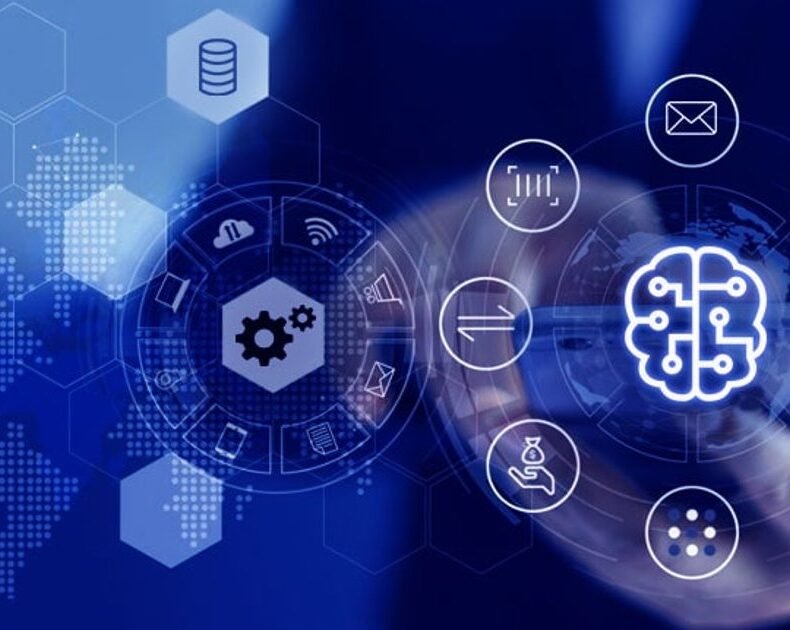AI has become a potent force in the banking sector as well, particularly in B2B credit risk management. Risk management is an important process for any business that is constantly exposed to credit risk from counterparties. Real-time AI credit assessment tool provides instant and accurate credit evaluations. Utilising advanced algorithms, our system analyses various factors to determine creditworthiness efficiently. Make informed decisions with confidence and streamline your credit assessment process today. AI is also changing this area by providing organizations with the ability to quickly identify and assess potential risks, monitor counterparties in real-time, and automate various parts of credit workflows, including critical activities such as credit limit setting.
Artificial intelligence we are trying to use technology to simulate human thinking, be it cognitive processes, speech, hearing, vision motion, etc. ChatGPT, Dall E, Amazon’s Alexa, Apple’s Siri, and Google Assistant are all examples of AI because there are so many different elements that work together, such as speech, unstructured inquiries, search, etc.
Risk management is an important process for any business that is constantly exposed to credit risk assessment from counterparties. AI is also changing this area by providing organizations with the ability to quickly identify and assess potential risks, monitor counterparties in real-time, and automate various parts of credit workflows, including critical activities such as credit limit setting.
Role of AI in B2B Credit Risk Assessment Management:
Risk Identification
Risk identification is probably the most challenging part of credit risk Assessment management as the question is “how do you identify and predict the risk of credit default by counterparties?”The answer is not easy. This prediction will be based on historical information you have and changes in environmental variables.
AI-based platforms can identify potential credit risks by analysing large amounts of data about counterparties from internal and external sources, including financial statements, payment track records, transaction history, and more. For example, AI algorithms can rapidly analyse counterparties ‘ financial statements to identify any financial red flags, such as declines in key performance variables, financial ratios, etc. They can automatically detect and Mark trends related to delayed regulatory filings, employee payments. , Or a decline in the working capital status of peers.
In addition to financial data, AI can analyse non-financial data, such as court records, Media articles, videos, social media, podcasts, etc., to identify potential counterparty risks. For example, you could deploy AI tools to monitor news and social media posts related to your counterparts to identify any developments that could negatively impact their risk profile. Counterparties whose risk profile has deteriorated can be marked for review of their credit limit.
Credit Risk Model Development for assessing creditworthiness
AI-based credit risk management platforms not only identify or predict risk but also help assess counterparties ‘ creditworthiness. Traditionally, credit risk assessment involves manually analysing income statements and historical payment patterns and making decisions about the counterparty’s credit risk. Once the credit risk assessment model is implemented, it automatically assigns a credit score to all counterparties. In addition, many companies deploy credit limit setting models that automatically recommend credit limits for each counterparty based on its credit score. This helps limit human intervention in the credit limit-setting process, reducing the scope for error or corruption. Any exception to the recommended credit limit would require high-level approval, facilitating better control by preventing the flow of credit to risky counterparties.
Real-time monitoring
Real-time monitoring of counterparty credit risk is essential in today’s financial landscape, and AI-based platforms are making it easier than ever. These platforms monitor counterparties in almost real time to quickly identify and respond to potential risks. For example, an AI algorithm can monitor the counterparty’s financial transactions to identify any unusual activity, such as sudden increases in transaction volume or changes in transaction patterns. Early warning systems also monitor external data sources (news, social media, regulatory filings, credit bureau data, etc.) about peers to identify potential risks. Credit risk models automatically generate modified credit scores based on new information generated by the early warning system. This allows for an active reduction in credit risk risk for counterparties whose credit profile has deteriorated.
Fraud detection
AI is changing our thinking about fraud detection and Prevention and becoming an indispensable tool for managing counterparty risk in the digital age. In fact, Juniper Research estimates that worldwide spending on AI-enabled financial fraud detection platforms will increase by 2027 to over $ 10 billion, rising in 2022 from just US $ 6.5 billion.
An exciting future
Driven by the increase in computing power, AI is already changing credit risk management and will do so more quickly in the future. As AI advances, we can expect even more innovative risk management platforms to emerge that will be more effective at identifying, predicting, evaluating, monitoring, and mitigating large-scale credit risks on a real-time basis. AI-powered tools will become more ubiquitous, and there will be even more significant benefits, including better forecasting accuracy and lower cost. The inclusion of AI platforms in the arsenal of companies bodes well for credit risk management in the coming days.
Read More ( Click Here )



